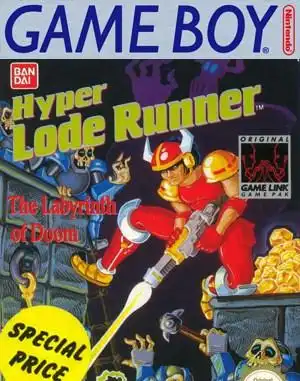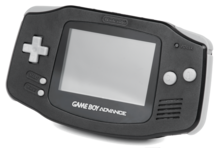Step back in time to the days when portable gaming meant holding a chunky gray (or colored!) brick in your hands, squinting at a monochrome screen under the nearest light source. Amidst the Tetris and Mario titles, a classic puzzle-platformer found a fantastic home: Hyper Lode Runner Game Boy. Released by Bandai in 1990, this wasn't just a quick port; it was a faithful, challenging, and surprisingly feature-rich adaptation of the beloved Lode Runner formula, perfectly suited for gaming on the go.
What Exactly is Lode Runner?
If you missed the original PC classic, Lode Runner is a unique blend of puzzle and platforming. You play as a runner who can't jump, but can dig holes in the floor. Your goal is to collect all the gold in a maze-like level while avoiding pursuing guards. Dig a hole, wait for a guard to fall in, walk over their head, collect the gold, and make your escape! It's simple in concept, but incredibly deep in strategy.
Bringing the Maze to the Game Boy
Adapting a game known for complex, multi-layered levels to the small, low-resolution screen of the original Game Boy was a challenge. Hyper Lode Runner Game Boy tackled this by keeping the core mechanics intact. The graphics are undeniably basic – simple sprites and tile sets – but they are clear and functional. The sound is classic Game Boy chiptune, repetitive but charmingly nostalgic.
Playing on the small screen adds a layer of challenge. Levels can feel cramped, and keeping track of multiple guards requires sharp focus. Yet, the game design holds up. Each level is a self-contained puzzle, requiring careful planning:
- Which gold bar do I go for first?
- Where can I dig to trap a guard?
- Is there a way to use the guards to reach inaccessible gold?
- How do I avoid getting trapped myself?
This portable version captured that addictive loop perfectly.
Features That Matter (Even on the Go)
Despite the hardware limitations, Hyper Lode Runner included features that made it feel complete:
- Faithful Gameplay: The core digging, trapping, and gold-collecting mechanics are spot-on.
- Plenty of Levels: It packed a good number of challenging stages to keep you busy.
- Continue Option: Thankfully, they added a continue feature, essential for those tricky later levels where one mistake can be fatal.
- Edit Mode: A standout feature was the inclusion of an Edit Mode! Just like the original, you could design your own levels. While you couldn't save them permanently (a common limitation for handhelds of the era without battery-backed RAM for level data), it was still a fantastic way to experiment and extend the fun.
Why Play Hyper Lode Runner Today?
For retro gamers, Hyper Lode Runner Game Boy offers a pure hit of nostalgia and classic puzzle design. It's a testament to how engaging gameplay could transcend graphical limitations. It's perfect for short bursts of play, making it ideal for modern portable devices via emulation.
If you're curious about experiencing this portable gem, you can often find ROMs available on sites dedicated to game preservation (like Archive.org) for play in a Game Boy emulator on your phone or computer. It's a great way to appreciate the ingenuity of early handheld game design.
Quick FAQs
Q: Who published Hyper Lode Runner on Game Boy? A: It was published by Bandai.
Q: When was Hyper Lode Runner for Game Boy released? A: It was released in 1990.
Q: Can you save levels created in the Edit Mode? A: No, levels created in the Edit Mode on the original Game Boy version could not be saved permanently.
Q: Is Hyper Lode Runner the same as the original Lode Runner? A: It's a faithful adaptation of the core Lode Runner gameplay for the Game Boy platform, featuring similar mechanics and level design principles.
Reliving these portable classics like Hyper Lode Runner is a reminder of gaming's roots and the simple joy found in clever design. Grab an emulator, load it up, and see if you still have the skills to collect all the gold!


